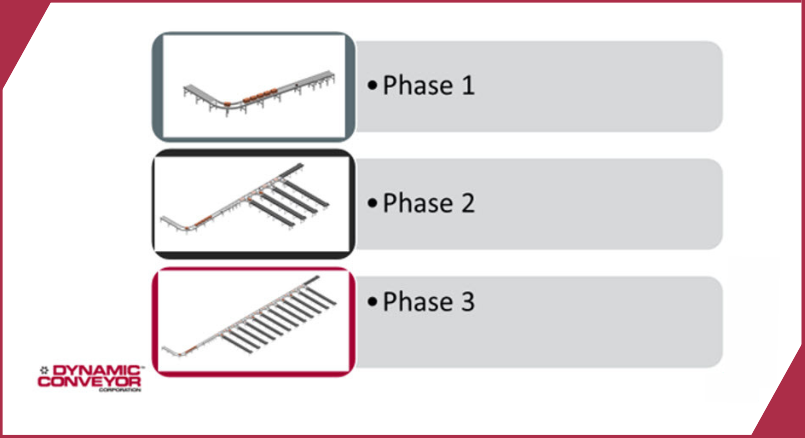 When embarking on a large capital project such as implementing automation solutions with conveyor systems, careful planning and strategic execution are key to success. One approach that has gained traction in recent years is breaking down conveyor projects into manageable phases. This approach offers a range of benefits that contribute to smoother implementation, reduced risks, improved adaptability, and enhanced project outcomes. In this blog, we’ll delve into the reasons why adopting a phased approach to conveyor projects is a wise decision.
When embarking on a large capital project such as implementing automation solutions with conveyor systems, careful planning and strategic execution are key to success. One approach that has gained traction in recent years is breaking down conveyor projects into manageable phases. This approach offers a range of benefits that contribute to smoother implementation, reduced risks, improved adaptability, and enhanced project outcomes. In this blog, we’ll delve into the reasons why adopting a phased approach to conveyor projects is a wise decision.
Effective Planning and Resource Allocation
Dividing a large conveyor project into phases enables better planning and resource allocation. Each phase can be thoroughly assessed, planned, and executed without the pressure of managing the entire project all at once. This approach allows for a more detailed analysis of the required resources, budget, and timeline for each phase, leading to more accurate forecasts and improved project execution. Additionally, a phased approach can reduce overall downtime to plant operations, ensuring the project is implemented as efficiently as possible.
Risk Mitigation
Conveyor projects can be complex and may involve unforeseen challenges. By breaking the project into phases, you can identify and address potential risks early on. This proactive risk management approach allows for better contingency planning and adaptation during each phase. Lessons learned from previous phases can be applied to subsequent phases, reducing the likelihood of costly mistakes and delays.
Adaptability to Changing Requirements
In today’s rapidly evolving industrial landscape, business requirements and priorities can change unexpectedly. A phased approach to conveyor projects allows for greater flexibility in accommodating changes. If market demands or technological advancements shift during the project, adjustments can be made more easily between phases. This adaptability ensures that the final conveyor system aligns with the most current needs of the business. Conveyor solutions that are modular allow for improved adaptability to changing requirements and are easy to scale with each phase of the project and future business needs.
Stakeholder Engagement and Feedback
Phased projects provide opportunities for stakeholder engagement and feedback at various milestones. This involvement fosters a sense of ownership and collaboration among project stakeholders, including employees, management, and customers. Regular feedback loops ensure that the conveyor system’s design and functionality meet the diverse needs of different stakeholders, resulting in a more customer-centric final product.
Measurable Progress and Motivation
Completing project phases provides a sense of accomplishment and motivation for the project team. As each phase is successfully completed, team members can see tangible progress and celebrate their achievements. This positive reinforcement boosts team morale and dedication, driving motivation throughout the project’s lifecycle.
Easier Integration and Testing
Complex conveyor systems often require integration with other machinery and processes. By executing the project in phases, integration and testing become more manageable. Each phase can be thoroughly tested and optimized before moving on to the next, reducing the likelihood of extensive troubleshooting during the final stages of the project.
Cost Management
Phased projects allow for better CAPEX management and allocation. Budgets can be allocated to specific phases, making it easier to track expenses and ensure that financial resources are being used efficiently. This approach also helps in prioritizing essential elements of the conveyor system to keep conveyor costs in check, and preventing cost overruns due to scope creep.
In today’s dynamic industrial landscape, executing conveyor projects in phases offers a range of advantages that contribute to project success. By promoting effective planning, risk mitigation, adaptability, stakeholder engagement, and cost management, this approach ensures that the final conveyor system aligns with the evolving needs of the business and is implemented efficiently. As industries continue to evolve, the phased approach to conveyor projects remains a valuable strategy for achieving optimal outcomes.
We at Dynamic Conveyor stand ready to support your conveyor projects – phased or not. Contact us to get started.
[starbox]